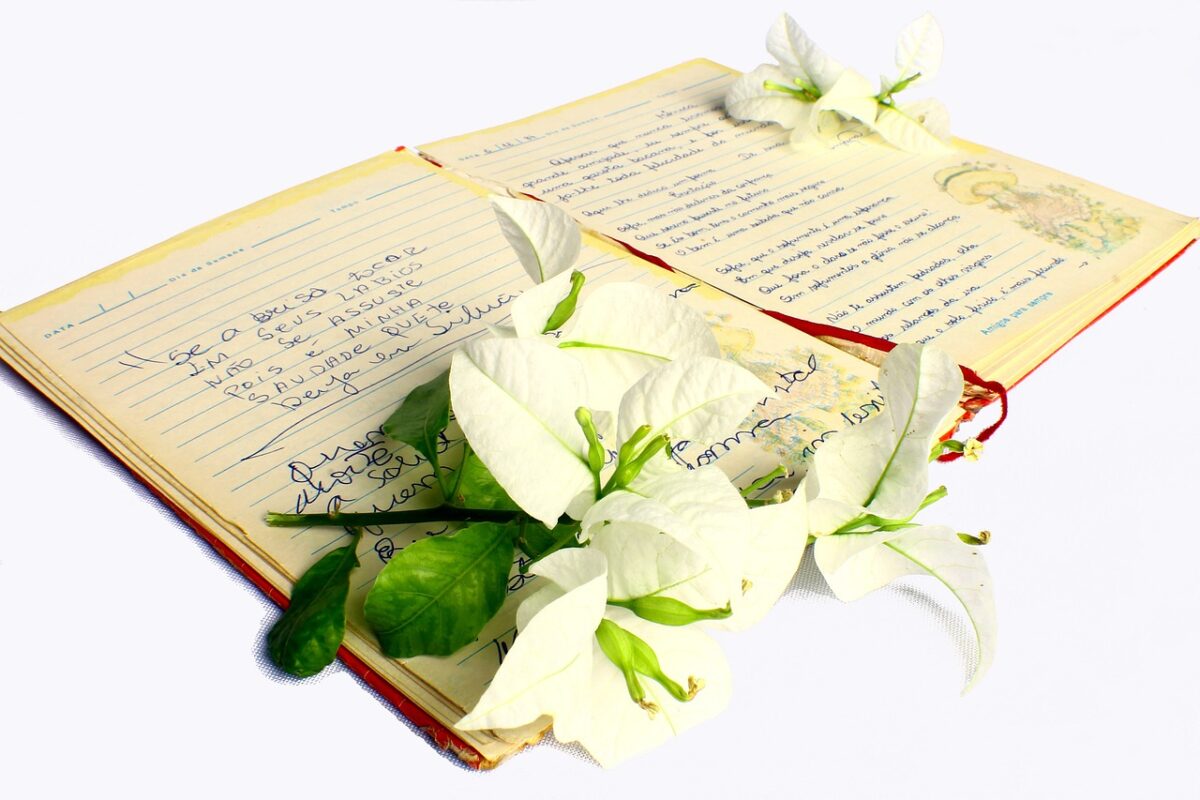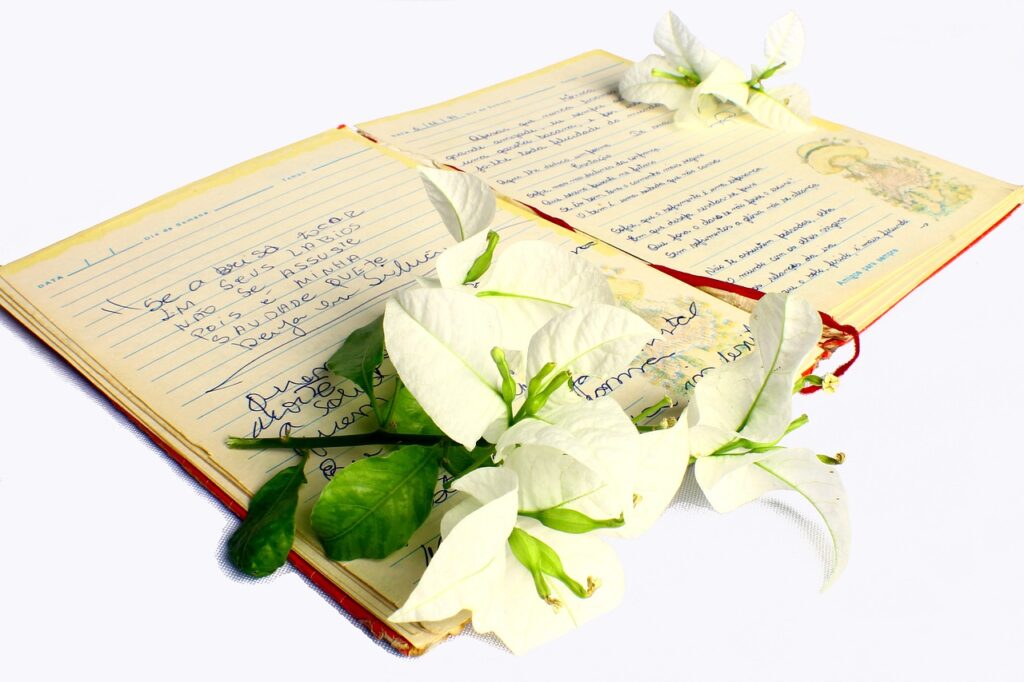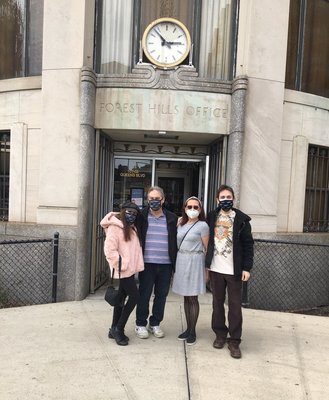The Whimsicals: Mosaic Artwork That Delights and Amuses
An Interview with Stained Glass Artist Sandra Forrest
By Meagan J. Meehan | news@queensledger.com
Sandra (“Sandy”) Forrest is the creator of vividly-colored mosaic artwork which immediately grabs attention due to its vibrancy and equilibrium between abstract and figurative work. In her translucent glass pieces—which expertly use color, texture, shape, and light to create a cohesive composition—human figures lounge in pools, fly through the sky, or fan themselves femininely, typically surrounded by backgrounds of shapes and patterns and colors that hark back to abstract expressionist approaches to art. She is arguably best known for her “Whimsicals” series of multidimensional opaque glass mosaics that feature humorous scenes. This collection, more than any other, is a direct reflection and extension of Sandy’s book illustrations, which is another medium that she is passionate about.

“Lady With a Fan” by Sandra Forrest
Sandy is currently associated with the Brooklyn Artists Waterfront Coalition (BWAC) in Red Hook but she started her career in California where she earned a B.A. in Graphic Communications at San Diego State University. Upon relocating to New York, she earned an M.A. in Art Education from Brooklyn College.
Sandy recently granted an exclusive interview where she discussed her experiences working as an artist and creatively thriving in Brooklyn.
Meagan Meehan (MM): How did you initially get interested in art and how did you get into book illustration and stained glass?
Sandra Forrest (SF): I was a graphic design major in college and an illustration minor. I was an art director in children’s magazine and book publishing, including Golden Books, Weekly Reader, and others. I have illustrated over 60 books and co-wrote three, two of which are graphic novels. The mosaics, especially the Whimsicals, are a direct extension of my book illustrations, just using a new medium. Glass is a fascinating medium since light is one of the materials I use.
MM: You are known for your “Whimsicals” which are art pieces with a humorous edge. What are some of the most memorable pieces in this series?
SF: I made (and sold) several versions of “Coney Island Midway,” which are fun because of the characters, some quite real. One hot July day ten years ago I drove to Coney to take pictures of real people and turned them into ceramic. Also, I sent you a favorite called “Lady With a Fan After Klimt” which is a mix of ceramic and metallic mosaic pieces. I love the mix of colors and textures, flat and bas relief.
MM: How do you think visual art and humor can inform one another?
SF: I don’t see much humorous art in shows and galleries. Maybe if it’s humorous it’s not taken seriously, which is a shame. We all need more laughs.
MM: You are part of the Brooklyn Waterfront Artists Coalition (BWAC) in Red Hook. So, how did you get involved with that organization and how have they helped you further your work?
SF: BWAC has provided a strong and supportive venue to show and sell my work in member and juried shows. It’s exciting and rewarding to be a part of that art scene and being around other artists. We all work in such different ways that it’s thrilling to see new work from friends, especially when we reopen the gallery in April and we have had a chance to work over the winter. I am the Vice President, so the winter is also really full getting organized for the 2024 shows, there were six Zoom meetings last week alone. So much goes into the background: member committees work on publicity, grant-writing, exhibitions and events, membership, governance issues, and strategic planning. Once the show season starts there isn’t as much time to do all that. We also do a lot of community outreach, such as with the Red Hook Business Alliance, Brooklyn Public Library events, Park Slope Windsor Terrace Artists, and more.
MM: Do you feel that the vibrancy of Brooklyn—especially Red Hook—inspires you and what’s your favorite thing about being a Brooklyn-based artist?
SF: Brooklyn overall has become an exciting and, as you say, vibrant art scene. It seems that wherever you go—Provence, Rome—everyone knows Brooklyn is a cool, creative place. You don’t even have to say Brooklyn, New York. Just Brooklyn is enough. Red Hook has an outlaw vibe which I really like. It’s in New York but in some ways, not really. I look at the Civil War-era warehouses where the gallery is and wonder what crazy/wonderful and large work is being done there. Artists come by and tell us they are making big wood sculptures just down the street, or baby clothes! It’s all about having the space. And the visual drama of the area is just inspiring. The sunsets! OMG!! That statue! As far as visual inspiration, I have made many mosaics of the bridges but finally moved on to other subjects.
MM: How do you go about finding opportunities to exhibit your work?
SF: Ten years ago, I applied to every craft fair within an hour of Brooklyn: New Jersey, Connecticut, Brooklyn, Westchester. Sometimes eight or ten a year. I sold well in those shows and it was fun talking to customers, but many were held outdoors, and expensive so when it rained it was a disaster. Putting and taking down the tent was difficult. I stopped doing that this year. The Brooklyn Chamber of Commerce has a new shop with a gallery show in Industry City. Fifteen BWAC artists were featured, which is very nice. Also, I am in a Salon Show at the Williamsburg Art & Historical Center which opens today.
MM: Be honest, out of all of your creations, do you have any particular favorite piece?
SF: “Lady With a Fan After Klimt.” I sold it, but regret selling it. “The Path,” a translucent mosaic of a path through birches with strong shadows. “Aerial View of Manhattan” as seen from a plane at sunset, at sunset.
MM: What would you say has been the highlight of your artistic career so far?
SF: I always think the highlight is whatever I just finished. The graphic novels were really fun because I worked with my two best friends (both writers). “Franceso’s Fountain” and “The Mysteries at the Vanished Villa” required several trips to Rome, Venice, and Naples, not as a tourist this time, but with a purpose.
MM: What are your ultimate goals for the future and is there anything else that you would like to mention?
SF: The challenge is always asking myself: what’s the next idea? Right now, I’m trying to come up with another ceramic/mosaic concept. I can’t copy myself as that’s boring.






